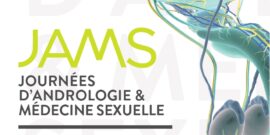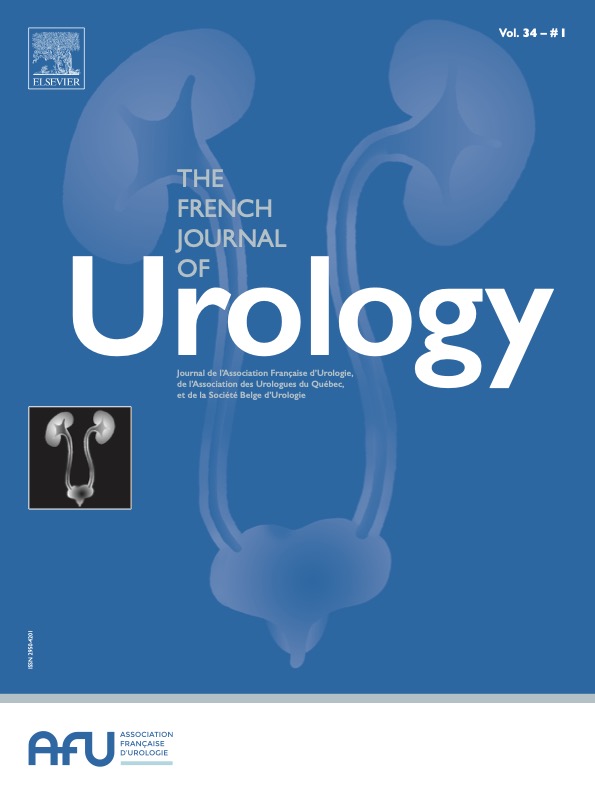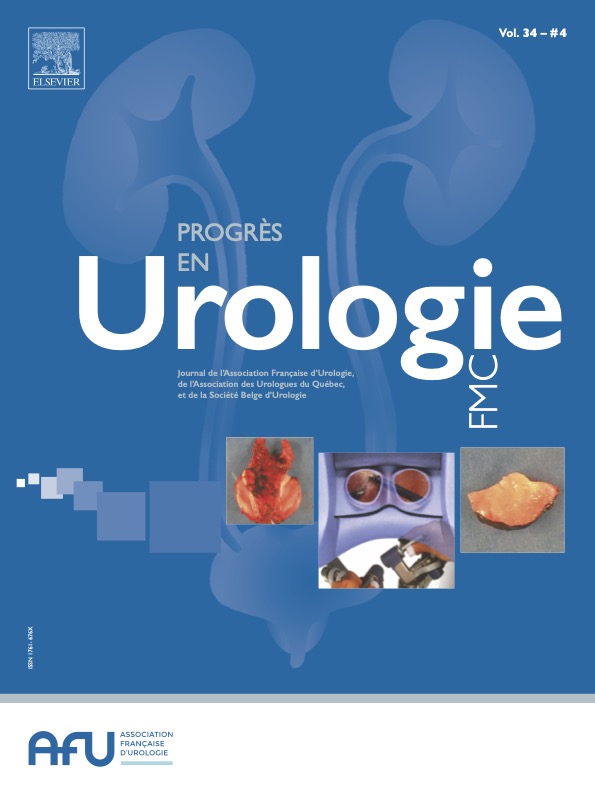According to the (American Urological Association) AUA recommendations, literature data report spontaneous passage of ureteral stones<4mm in 95% of patients within the first 40 days [2], of stones<5mm in 75%, and of stones≥5mm in 62% of patients in a mean time of 15 days (6–29 days) [3]/[level of evidence (LOE) 1], although there was no size threshold [2]. Only 4.8% of monitored stones<2mm required an urological procedure [4] (systematic review).
Spontaneous expulsion rates decrease with the increasing stone size, but also in function of the stone location: proximal (spontaneous passage in 49% of patients), middle (spontaneous passage in 58% of patients) and distal (spontaneous passage in 68% of patients) [3]. In this case, the objective of surveillance is to detect the appearance of a complication (e.g., fever, clinical tolerance) and to confirm the stone migration/elimination by imaging every 15 days for 1 month [4].
Urological treatment is justified in the following cases [1, 2, 4]:
• | stone-related symptoms;
|
• | presence or risk of kidney function impairment (e.g., solitary kidney, bilateral obstruction);
|
• | low probability of spontaneous elimination (e.g., stone size, location, multiple ureteral stones, malformation or ureteral stenosis);
|
• | persistence of the stone or obstruction after the initial surveillance;
|
• | clinical context, comorbidities;
|
• | patient's choice (e.g., preferences, professional or travel context).
|
The choice of technique is based on the advantages and limitations of each method (see respective chapters), and also on the clinical context (e.g., emergency, morbid obesity, general health status, coagulation disorder, pregnancy).
Ureteroscopy offers more chances of stone-free rate in fewer interventions, but it exposes to a higher risk of complications than extracorporeal shock wave lithotripsy (ESWL), without difference in stone-free rate at 3 months [5] (systematic review).
|
|
Recommendations “Summary of indications – ureteral stones” |
The recommendations are summarized in the following decision trees (Figure 1, Figure 2).
Figure 1.
Management of ureteral stones in emergency and in the absence of infection signs. ESWL: extracorporeal shock wave lithotripsy; JJ: double J stent; MET: medical expulsive therapy; NT: nephrostomy tube; URS: ureteroscopy.
Figure 2.
Management of ureteral stones in non-emergency situations and in the absence of urinary infection. ESWL: extracorporeal shock wave lithotripsy; JJ: double J stent; MET: medical expulsive therapy; NT: nephrostomy tube; URS: ureteroscopy.
The objectives of kidney stone management are to avoid the risks of renal colic, of impaction of a stone that has migrated to the ureteral level with little chance of spontaneous elimination, of infectious complications, of kidney function impairment, of recurrence, and also the iatrogenic risk of therapeutic escalation due to the increase in stone size.
The indications for urologic treatment of kidney stones are based on:
• | stone symptoms (hematuria, pain);
|
• | stone size, composition, and growth;
|
• | risk of complications (e.g., migration, infection, kidney failure);
|
• | clinical context, comorbidity;
|
• | patient's choice (preferences, professional or travel context).
|
Kidney stones are monitored in the absence of symptoms, threatening features, or risk of complications. A systematic review on active surveillance of asymptomatic kidney stones reported 3–29% of spontaneous clearance, 7–77% of symptom appearance, 5–66% of size increase, and 7–26% of required interventions [6] (systematic review).
Two studies evaluated events related to residual fragments after ureteroscopy and found higher complication rate and earlier appearance of complications with residual fragments>4mm [7]/LOE4; 18–19.6% of patients had symptoms related to these fragments [7]/LOE4 [8].
A trial on the radiological follow-up of asymptomatic lower calyceal stones<10mm every 6 months reported a 33% risk of progression [9]/LOE2 that may lead to suggesting a yearly surveillance due to the low risk of migration.
Therefore, surveillance will be proposed mainly to patients with stones at low risk of progression or of complications (size<4mm and/or localization in the lower calyces and not linked to infection) [expert opinion (EO)]. Surveillance could be extended also to patients with bigger stones, in function of the clinical context and comorbidities. On the other hand, an urological intervention may be proposed to patients with stones<4mm, for instance, for professional (e.g., soldier, pilot, expatriate), social, or travel reasons (EO).
The choice of technique is multifactorial and is based on the advantages and limitations of each method (see articles on ESWL, percutaneous nephrolithotomy, ureteroscopy/ureterorenoscopy, chemolysis), but also on the clinical context (e.g., morbid obesity, general health status, coagulation disorders, pregnancy), while finding a balance between the least invasive procedure and the objective of achieving the stone-free status.
It is important to consider the stone composition (if already known) and/or density (Hounsfield units [HU]) when choosing the treatment, by taking into account that a threshold size of 5mm is used for the reliable measurement of density (HU) on CT to predict calcium oxalate monohydrate stones [10]/LOE4.
Stones made only of uric acid may be dissolved by alkalinization (see “Medical management” article). Brushite and cystine stones are prone to rapid growth and resistance to ESWL, and calcium oxalate monohydrate stones respond poorly to ESWL due to their hardness (see article on ESWL).
The importance of the stone-free status should lead to choose the best extraction technique for infectious stones [11]/LOE4, for stones at high risk of recurrence (cystine [V], dihydroxyadenine, brushite [12], [Ic], [IVa2] stones) [13]/LOE4 [14]/LOE4, or in the context of stasis (ureteropelvic junction obstruction, mobilization failure, neurogenic bladder) (EO).
A randomized clinical trial [15]/LOE2 demonstrated that during endoscopic treatment of a stone, concomitant treatment of the associated asymptomatic stones≤6mm reduced the risk of recurrence by 82% (16 vs. 63%), and lengthened the time to recurrence by 75% (1631.6±72.8 days vs. 934.2±121.8 days). Therefore, it seems logical to prefer, in the case of multiple calyceal stones, maximum endoscopic treatment with a minimum number of procedures. This will also allow performing the endoscopic description of renal papillary abnormalities and stones (see article “Endoscopic description of renal papillae and stones”) because of its etiological diagnostic role in the presence of active urinary stone disease [16] (systematic review).
The recommendations are summarized in the following decision trees (Figure 3, Figure 4).
Figure 3.
Management of a kidney stone in function of its size and localization (when treatment is indicated). ESWL: extracorporeal shock wave lithotripsy; MSK: medullary sponge kidney; PCNL: percutaneous nephrolithotomy; URS: ureteroscopy.
Figure 4.
Management of a kidney stone in function of its composition (when treatment is indicated). ESWL: extracorporeal shock wave lithotripsy; MSK: medullary sponge kidney; PCNL: percutaneous nephrolithotomy; URS: ureteroscopy.
If residual stones/fragments remain after treatment, their management depends on their size and includes follow-up, new attempt with the same technique, or changing the treatment modality (Figure 5).
Figure 5.
Management of residual stones and fragments.
D’après les recommandations de l’AUA, même s’il n’existe pas de seuil de taille [2], il a été décrit dans la littérature une élimination spontanée des calculs urétéraux<4mm dans 95 % des cas durant les 40 premiers jours [2], < 5mm dans 75 % et ≥ 5mm dans 62 % avec un délai moyen de 15j (6–29jours) [3]/NP1. Seulement 4,8 % des calculs<2mm surveillés ont recours à un geste urologique [4] (revue systématique).
Les taux d’élimination spontanée diminuent donc avec l’augmentation de la taille des calculs, mais aussi en fonction de leur localisation : proximale (passage spontané dans 49 % des cas), moyenne (passage spontané dans 58 % des cas) et distale (passage spontané dans 68 % des cas) [3].
La surveillance a alors pour objectifs de déceler la survenue d’une complication (fièvre, tolérance clinique…) et de vérifier la potentielle migration/élimination du calcul par un examen d’imagerie tous les 15j pendant 1 mois [4].
Le recours à un traitement urologique sera motivé par [1, 2, 4] :
• | le caractère symptomatique ;
|
• | la présence ou le risque d’insuffisance rénale (rein unique, obstruction bilatérale…) ;
|
• | la faible probabilité d’élimination spontanée (taille du calcul, localisation, calculs urétéraux multiples, malformation ou sténose urétérale…) ;
|
• | la persistance du calcul ou de l’obstruction après surveillance première ;
|
• | le contexte clinique, comorbidités ;
|
• | le choix du patient (préférences, contexte professionnel ou de voyage…).
|
Le choix de la technique utilisée repose sur les avantages et limites de chaque traitement (cf. chapitres respectifs), mais aussi le contexte clinique (urgence, obésité morbide, état général, troubles de la coagulation, grossesse…).
Si l’URSS offre plus de chances de SFR en moins d’interventions, elle expose à un risque de complications supérieur à celui de la LEC, sans différence de résultat SFR à 3 mois [5] (revue systématique).
|
|
Recommandations « Synthèse des indications – calculs urétéraux » |
Les recommandations sont synthétisées dans les arbres décisionnels ci-après (Figure 1, Figure 2).
Figure 1.
Prise en charge d’un calcul urétéral dans un contexte d’urgence et en l’absence de signe infectieux.
Figure 2.
Prise en charge d’un calcul urétéral hors urgence et en l’absence d’infection urinaire.
Les objectifs de la prise en charge des calculs rénaux sont d’éviter les risques de CN, d’enclavement d’un calcul qui a migré au niveau urétéral avec de faibles chances d’élimination spontanée, de complication infectieuse, d’altération de la fonction rénale, de risque de récidive mais aussi de risque iatrogène par escalade thérapeutique de par leur augmentation de taille.
Les indications de traitement urologique des calculs rénaux reposent sur :
• | le caractère symptomatique (hématurie, douleur) ;
|
• | la taille, la composition et la croissance du calcul ;
|
• | le risque de complication (migration, infection, insuffisance rénale…) ;
|
• | le contexte clinique, comorbidités ;
|
• | le choix du patient (préférences, contexte professionnel ou de voyage…).
|
Les calculs rénaux peuvent être surveillés en l’absence de symptômes, de caractère menaçant ou de risque de complication. Dans une revue systématique de la surveillance active de calculs rénaux asymptomatiques, il a été rapporté des taux d’élimination spontanée de 3–29 %, d’apparition de symptômes de 7–77 %, d’augmentation de taille de 5–66 % et d’intervention requise de 7–26 % [6] (revue systématique).
Deux études ont évalué les évènements liés à la présence de fragments résiduels (FR) après urétéroscopie, rapportant un taux de complications plus élevé et plus précoce en cas de FR>4mm [7]/NP4, avec un taux de 18–19,6 % de symptômes liés à ces fragments [7]/NP4 [8].
Un essai a porté sur la surveillance radiologique semestrielle de calculs<10mm caliciels inférieurs asymptomatiques et a décrit un risque de 33 % de progression [9]/NP2, ce résultat pouvant faire considérer une surveillance de rythme annuel en raison de leur faible risque de migration.
La surveillance s’adressera donc en priorité aux calculs à faible risque de progression ou de complication (taille<4mm et/ou localisation calicielle inférieure et de composition non infectieuse) (AE). La surveillance pourra cependant s’étendre à des calculs plus volumineux selon le contexte clinique et les comorbidités. À l’inverse, un geste urologique de nécessité pourra être également indiqué pour des calculs<4mm pour motif professionnel (militaire, pilote, expatrié…) ou social ou de voyage… (AE).
Le choix de la technique est donc multifactoriel et repose sur les avantages et limites de chaque traitement (cf. articles LEC, NLPC, URS/URSS, alcalinisation) mais aussi du contexte clinique (obésité morbide, état général, troubles de la coagulation, grossesse…) tout en mettant en balance le geste le moins invasif et l’objectif de tendre le plus possible vers le statut SFR.
Il est important de considérer la composition des calculs (si déjà connue) et/ou leur densité UH dans le choix de traitement, en sachant qu’il a été décrit une taille seuil de 5mm pour la fiabilité de la mesure de densité UH dans la prédiction scanographique des calculs d’oxalate de calcium monohydraté [10]/NP4.
Si seuls les calculs d’acide urique peuvent relever d’une dissolution par alcalinisation (cf. article « Prise en charge médicale »), ceux de brushite et de cystine exposent à une croissance rapide et une résistance à la LEC, et ceux d’oxalate de calcium monohydraté rapportent une moins bonne réponse de la LEC en raison de leur dureté (cf. article LEC).
L’importance du statut SFR doit faire privilégier une technique d’extraction optimale des calculs infectieux [11]/NP4, à fort risque de récidive (cystine [V], dihydroxyadénine, brushite [12], [Ic], [IVa2]) [13]/NP4 [14]/NP4, ou dans un contexte de stase (syndrome de la jonction pyélo-urétérale, défaut de mobilisation [patient neurologique…] [AE]).
Un essai clinique randomisé [15]/NP2 a démontré que lors du traitement endoscopique d’un calcul, le traitement concomitant de calculs asymptomatiques≤6mm associés réduisait le risque de récidive de 82 % (16 vs 63 %), et en allongeait le délai de 75 % (1631,6±72,8j vs 934,2±121,8j). Il paraît donc logique de préférer en cas de calculs multiples caliciels un traitement endoscopique maximal en un minimum de gestes qui permettra également de réaliser une REPC (cf. article REPC) de par son rôle diagnostique étiologique devant une maladie lithiasique active [16] [Almeras et al., 2021] (revue systématique).
Les recommandations sont synthétisées dans les arbres décisionnels ci-après (Figure 3, Figure 4).
Figure 3.
Prise en charge d’un calcul rénal en fonction de sa taille et de sa localisation (lorsqu’un traitement est indiqué).
Figure 4.
Prise en charge d’un calcul rénal en fonction de sa composition (lorsqu’un traitement est indiqué).
En cas de fragments résiduels après traitement, leur prise en charge dépend de leur taille et inclut la surveillance, une nouvelle tentative ou le changement de modalité thérapeutique (Figure 5).
Figure 5.
Prise en charge des fragments résiduels.
C Almeras: Storz, Coloplast, Boston Scientific, Aseptinmed, Alnylam
P Meria: Cook, Boston Scientific, Coloplast.









